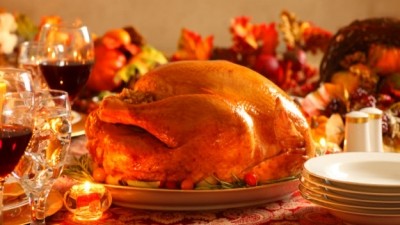Christmas feature
Spicing up Christmas
these festive specialities taste of Christmas. But why is it that
the smell of spices such as cinnamon, allspice, nutmeg, cloves and
ginger is synonymous with yuletide?
The historical reason is a mixture of scarcity and decadence. In the days before mass production and 24-hour supermarkets, many cooks had to ration their spices, guarding them for those truly special occasions.
This was allied with the desire to treat oneself at Christmas, to produce a truly memorable gastronomic delight.
A lack of refrigerators and vacuum packing also had an influence. Spices (and the brandy or sherry that usually went along with them) are natural preservatives, helping to keep the food edible for longer.
This led to festive food being packed full of them, bombarding and teasing our taste buds in equal measure.
And in turning to spice as the route to a rich-tasting Christmas, five spices above came to the fore.
Cinnamon was one of the first known spices, and some academics believe that growing demand could have been a driving force behind the discovery of the Americas. Cinnamon was used in many recipes in Medieval Europe to bring out the flavour of dishes.
The origins of the mince pie can be traced to cinnamon's application in medieval Europe, where it was used to bridge flavours in cauldrons. When crusaders brought home sugar from the east, it too was added to the pot and voilà - the mince pie was born.
Nutmeg has become so attached to Christmas that the festive period without nutmeg is like Easter without an egg. Arriving in Europe in 1512 from the Banda Islands, nutmeg has found its way into all the holiday highlights: Plum pudding, eggnog, and turkey stuffing.
But if you're one of those people who like to go overboard at Christmas, a note of caution - take it easy on the nutmeg! In large doses it can cause dizziness, stomach pain and hallucinations.
Allspice, which was imported to Europe soon after the discovery of the new world, is the only spice grown exclusively in the Western Hemisphere.
It was reputed to be one of the spices Christopher Columbus discovered when he explored the Caribbean Islands. In true Columbus style, he was actually looking for pepper, rather like looking for the East Indies and finding America.
It's warm, sweet flavour majors on warm - Russian soldiers in the 19th century used the spice to keep their feet warm.
The clove is native to the North Moluccas, the Spice Islands of Indonesia and from the 8th century, was one of Europe's most sought after spices. Cloves are often used to enhance the flavour of game, especially venison, wild boar and hare and can be used as pickling spices.
Cloves have found their way into so many Christmas dishes, probably because they are so cheap. For this we must thank the French.
In the late 18th Century the global clove market was monopolised by the Dutch, who regulated trade and drove up prices. The French, never to be denied a culinary necessity, established their own clove plantations and made cloves a cheap and widely available spice.
Cloves subsequently found their ways into mince pies, Christmas pudding, and the ancient drink of Wassail.
Last, but by no means least, is ginger, one of the earliest known spices in Western Europe. In English pubs in the nineteenth century, barkeepers put out small containers of ground ginger, for people to sprinkle into their beer - the origin of ginger ale.
Ginger is something of a double agent, working for both sweet and savoury, but is most famous at yuletide for ginger cookies and gingerbread men.
If you need further evidence ginger's double-crossing consider that it is drunk as an aphrodisiac in Africa, but eaten as a contraceptive in New Guinea.
All of these spices have found their way not only into our bellies but also into our hearts. Without them, Christmas just wouldn't taste of Christmas.
Happy Christmas!
By Anthony Fletcher, editor of Food Navigator.com, and Stephen Danielles, food science reporter.






